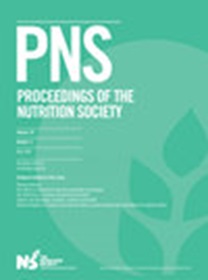英国生物数据库中膳食脂肪酸与肝脏脂肪积累之间的关系
IF 4.5
2区 医学
Q1 NUTRITION & DIETETICS
引用次数: 0
摘要
脂肪肝(定义为肝脏脂肪含量达 5%)是导致全球发病率和死亡率的一个主要因素,特别是由于其属于代谢相关性脂肪肝(MASLD)(1)。虽然其预防重点在于促进体育锻炼、保持健康体重和均衡饮食,但膳食脂肪酸与肝脏脂肪之间的关系仍不清楚(2,3)。本研究的目的是在没有摄入过量酒精的情况下,研究膳食脂肪酸与肝脏脂肪之间的关系,而不考虑能量摄入。研究分析的对象是英国生物库中的 9268 名非糖尿病参试者,这些参试者在基线时没有肝脏慢性疾病或心血管疾病,也没有过量饮酒。膳食中总脂肪、饱和脂肪酸(SFA)、多不饱和脂肪酸(PUFA)和单不饱和脂肪酸(MUFA)的摄入量是根据2009年至2012年间≥2次牛津网络问卷24小时膳食评估的平均值测定的。肝脏质子密度脂肪分数(LPDFF)是在 2016 年至 2020 年期间通过磁共振成像测量的。计算了多变量线性回归模型,以评估脂肪酸摄入量与 LPDFF 之间的关系,并对主要的人口统计学和生活方式混杂因素进行了调整。此外,还研究了 LPDFF 与 10 种 SFA、7 种 PUFA 和 4 种 MUFA 之间的关系。在对混杂因素进行充分调整后,未发现 LPDFF(%)与 MUFAs 之间存在显著关联。摄入量每增加 5%,PUFAs 与 LPDFF 呈反向关系(相对差值为-5.8% [95% 置信区间为-0.6, -1.9]),而 SFAs 与 LPDFF 呈正向关系(5.8% [3.3, 8.3])。SFA硬脂酸(4.20% [2.84,5.57])和棕榈酸(3.15% [1.78,4.54])的摄入量每增加 1 SD 就会产生正相关。PUFA中的α-亚油酸(-2.32% [-3.47, -1.17] )和二十二碳六烯酸(-2.14% [-3.23, -1.0.3] )以及MUFA中的芥酸(-2.52% [-3.61, -1.43] )呈负相关。这项观察性研究表明,SFAs 和 PUFAs 与肝脏脂肪的关联方向相反,与能量摄入无关。虽然总的 MUFA 与 LPDFF 没有明显的关联,但芥酸与肝脏脂肪呈反向关系,这突出了研究单个脂肪酸的价值。这些不同的关联为设计膳食试验提供了有价值的信息,这些膳食试验比较了不同类型脂肪酸的干预措施。这些进一步的研究将有助于更好地了解预防肝脂肪变性的理想膳食建议及其对全球健康的影响。本文章由计算机程序翻译,如有差异,请以英文原文为准。
Associations between dietary fatty acids and liver fat accumulation in the UK Biobank
Steatotic liver disease, defined as >5% of hepatic fat content, is a major contributor to global morbidity and mortality, in particular due to its category metabolic associated steatotic liver disease (MASLD)(1) . While its prevention focuses on promoting physical activity and maintaining a healthy weight and balanced diet, the associations between dietary fatty acids and liver fat remain unclear(2,3) . The aim of this study was to examine the associations between dietary fatty acids and liver fat in the absence of excessive alcohol intake, independently of energy intake.Analyses were conducted on 9,268 non-diabetic participants from the UK Biobank with no pre- existing liver chronic illness or cardiovascular disease at baseline, and without excessive alcohol consumption. Dietary intake of total fat, saturated fatty acids (SFAs), polyunsaturated fatty acids (PUFAs) and monounsaturated fatty acids (MUFAs) was measured using the mean of ≥2 Oxford WebQ 24-hr dietary assessments, responded to between 2009 and 2012. Liver proton density fat fraction (LPDFF) was measured by magnetic resonance imaging between 2016 and 2020. Multivariable linear regression models were calculated to assess the associations between fatty acid intakes and LPDFF, adjusting for key demographic and lifestyle confounders. In addition, associations between LPDFF and 10 individual SFAs, 7 PUFAs, and 4 MUFAs were also examined. Sensitivity analyses were carried out including participants who responded ≥4 dietary assessments (N=2,828).After fully adjusting for confounders, no significant associations between LPDFF (%) and MUFAs were found. Inverse associations with LPDFF were observed for PUFAs (−5.8% relative difference [95% confidence interval −0.6, −1.9]), per 5% increase in intake, while SFAs were positively associated with LPDFF (5.8% [3.3, 8.3]). Positive associations were observed per 1 SD increase in intake of individual fatty acids SFA stearic acid (4.20% [2.84, 5.57]) and palmitic acid (3.15% [1.78, 4.54]). Negative associations were observed for PUFAs alpha-linoleic acid (−2.32% [−3.47, −1.17]) and docosahexaenoic acid (−2.14% [−3.23, −1.0.3], and for MUFA erucic acid (−2.52% [−3.61, −1.43]). Sensitivity analyses presented similar results, and the associations between PUFAs and liver fat became slightly stronger (−10.73%, [−17.58, −3.32]).This observational study suggests that SFAs and PUFAs are associated with liver fat in opposite directions, independently of energy intake. While total MUFAs did not present significant associations with LPDFF, erucic acid was inversely associated with liver fat, highlighting the value of studying individual fatty acids. These different associations provide valuable information for the design of dietary trials that compare interventions with different types of fatty acids. These further studies would allow a better understanding of the ideal dietary advice to prevent liver steatosis and its global health impact.
求助全文
通过发布文献求助,成功后即可免费获取论文全文。
去求助
来源期刊
CiteScore
15.50
自引率
0.00%
发文量
190
审稿时长
6-12 weeks
期刊介绍:
Proceedings of the Nutrition Society publishes papers and abstracts presented by members and invited speakers at the scientific meetings of The Nutrition Society. The journal provides an invaluable record of the scientific research currently being undertaken, contributing to ''the scientific study of nutrition and its application to the maintenance of human and animal health.'' The journal is of interest to academics, researchers and clinical practice workers in both human and animal nutrition and related fields.

 求助内容:
求助内容: 应助结果提醒方式:
应助结果提醒方式:


